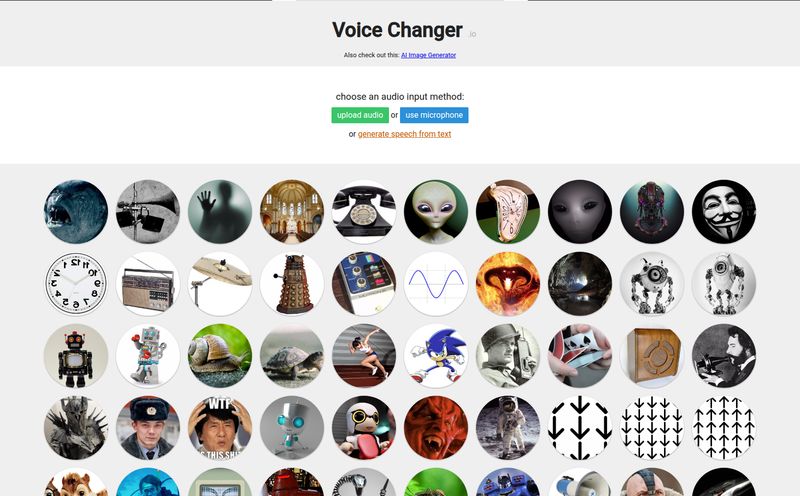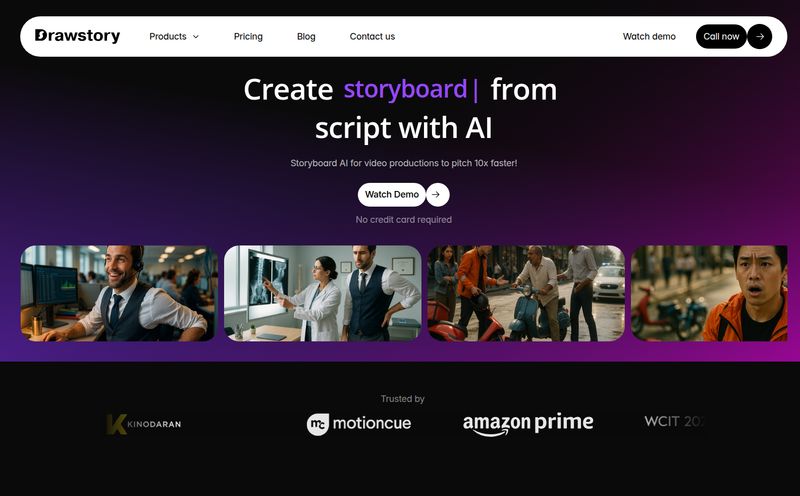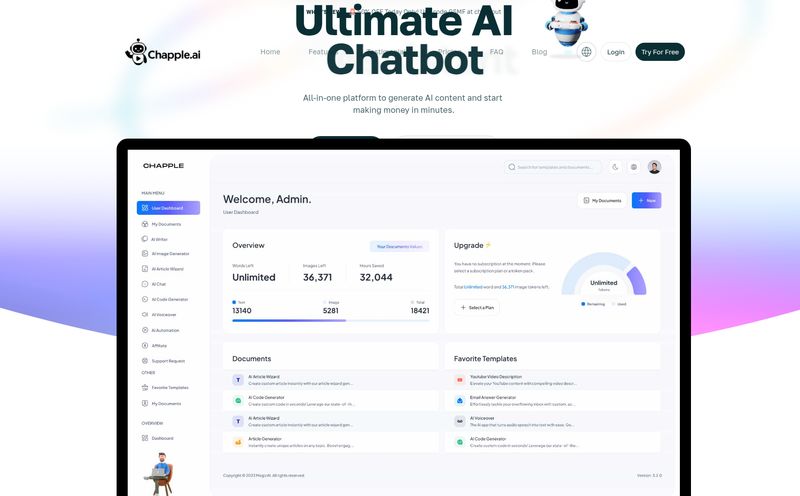There’s a certain magic to pixel art, isn’t there? It’s pure nostalgia for me. It brings back rainy afternoons spent huddled over a SNES, completely lost in the worlds of A Link to the Past or Chrono Trigger. Every blocky tree and chunky character sprite felt like it was crafted with so much care. And that's because it was. Pixel art is an incredibly skillful, and frankly, time-consuming discipline.
I’ve been in the game dev and digital marketing space for years, and one of the biggest hurdles for any solo developer or small team is asset creation. You can have the most brilliant game mechanic in the world, but without compelling visuals, it’s a tough sell. Hiring a pixel artist is ideal, but not always in the budget. Trying to do it yourself? Well, I remember spending an entire weekend on a game jam once, just trying to get a single 4-frame walk cycle to not look like a stumbling mess. It was… humbling.
This is where the new wave of AI tools comes in, promising to speed up workflows and democratize creation. So when I heard that the simple online tool Pixelicious had been folded into the much larger, more powerful Scenario platform, my curiosity was definitely piqued. Is this the shortcut to beautiful pixel art we’ve been waiting for, or just another shiny AI object?
What Exactly is Pixelicious (And Who is Scenario?)
Okay, let's break it down. At its core, Pixelicious was a super straightforward web tool: you upload an image, and it spits back a pixel art version. Simple, effective, and incredibly useful for quick conversions.
But here’s the important part: Pixelicious isn’t just a little standalone website anymore. It’s been acquired by and integrated into Scenario, a much bigger beast. Think of it like a talented indie band getting signed to a major record label. Scenario is a full-blown AI content generation engine for game developers. It’s not just about one-off image conversions; it's about creating consistent characters, training AI models on your own unique art style, and building entire visual worlds.
So, Pixelicious is now one of the specialized brushes in Scenario's much larger art kit. This context is everything, because its true power isn't just in what it does alone, but how it fits into that bigger workflow.
How It Works: The Magic Behind the Pixels
The process is still beautifully simple, which I appreciate. You’re not wrestling with a million sliders and settings right off the bat (though you can get more granular within the broader Scenario tools). For the most part, it’s a three-step dance:
- Upload Your Source Image: This could be a photo, a 3D model render, or even a piece of concept art.
- Let the AI Cook: The platform analyzes the image—colors, shapes, lighting—and translates it into a pixelated grid. It's like a super-fast, hyper-talented translator that speaks both 'photorealism' and '16-bit'.
- Download and Iterate: You get your pixel art output, ready to be dropped into your game engine or tweaked in a program like Aseprite.
For indie devs, this is a game-changer for rapid prototyping. You can take a stock photo of a knight, run it through the system, and have a placeholder sprite in minutes, not hours. It lets you test ideas and gameplay loops without getting bogged down in asset creation from scratch.
Visit Pixelicious
The Good, The Bad, and The Pixelated: A Frank Assessment
No tool is perfect, right? After playing around with it, here's my honest take. It’s a tool of convenience and speed, and that comes with its own set of pros and cons.
The Upsides: Why You Might Love It
The speed is the first thing that hits you. It’s fast. Seriously fast. The sheer convenience of doing this in a browser without installing bulky software is a massive win. For anyone who has ever felt that creative spark fizzle out while waiting for an application to load, you know what I mean. It lowers the barrier to entry for creators who have the vision but maybe not the specific pixel-pushing skillset. It’s a bridge between idea and execution. But the real secret sauce, as I mentioned, is its home within Scenario. You can generate a character concept with one of Scenario's other tools, then use the pixel art converter to see how it might look in a retro-style game. This integrated pipeline is where things get really interesting for serious developers.
A Few Caveats to Consider
Let's be real. This is not going to replace a dedicated, skilled pixel artist for a final, polished product. An AI, no matter how good, can sometimes miss the 'soul' of an image. It translates pixels logically, but a human artist makes intentional choices, imbuing a piece with personality and style that an algorithm might struggle to replicate. You might get an output that’s technically proficient but feels a bit generic. Also, this is an online tool, through and through. If your internet goes down or you're trying to work on a laptop during a commute with spotty Wi-Fi, you’re out of luck. Its a minor point for most, but one to remember.
Let's Talk Money: Breaking Down Scenario's Pricing
Since Pixelicious is part of Scenario, you’re subscribing to the whole platform. There’s no standalone price for just the pixel converter. Here’s how their plans generally shake out (prices can change, so always check their site for the latest):
| Plan | Price | Best For | Key Features |
|---|---|---|---|
| Pro | $36 / month | Indie Devs & Serious Hobbyists | 5,000 Creative Units, 5 Concurrent Generations, High-Res Downloads. |
| Team | $120 / month / seat | Small to Medium Studios | 15,000 CUs per seat, Priority Support, 15 Concurrent Generations. |
| Enterprise | Custom | Large Studios | Custom limits, Premium Support, Advanced Security. |
The currency of the platform is "Creative Units" or CUs. Every action, like generating an image or converting it to pixel art, costs a certain number of CUs. The Pro plan at $36 a month feels like the sweet spot for a solo developer looking to seriously integrate this into their workflow. It's a reasonable investment for the amount of time it could potentially save.
Is This the Right Tool for Your Project?
So, should you jump in? It depends entirely on your goals.
This platform is probably perfect for you if:
- You're in the rapid prototyping phase of a project and need visuals fast.
- You're a programmer or designer who isn't a confident artist but needs decent-looking placeholder assets.
- You want to generate inspiration by quickly converting concept images to see how they feel in a retro style.
- You're already interested in the broader AI-powered workflow that Scenario offers for creating consistent game art.
You might want to stick with traditional methods if:
- You're a professional pixel artist who lives and breathes Aseprite.
- Your game's entire identity is built around a highly unique, handcrafted art style that an AI can't replicate.
- You need to create final, hero assets that require meticulous, pixel-by-pixel control and artistic intuition.
In my opinion, the conversation isn't about AI replacing artists. It's about AI empowering creators. A tool like this doesn't make a non-artist into a master, but it does give them a powerful paintbrush they didn't have before. It handles the grunt work, freeing up precious time and mental energy to focus on what truly matters: making a fun and engaging game.
The integration of Pixelicious into Scenario is a smart move. It transforms a neat little utility into a crucial step in a much larger, more powerful creative process. It’s a sign of where the industry is headed—not towards soulless automation, but towards intelligent augmentation for human creativity.
Frequently Asked Questions (FAQ)
- Can I use Pixelicious for free?
- Scenario typically offers a free trial or a limited number of free Creative Units to get started. However, for continuous use, you'll need to subscribe to one of their paid plans like Pro or Team.
- What kind of images work best for conversion?
- Clear, well-defined images with strong silhouettes tend to produce the best results. A clean 3D render or a photo with good lighting will translate better than a messy, visually 'busy' picture.
- Is the output commercially usable?
- According to Scenario's terms, you generally own the content you generate. However, it's always critical to read their latest terms of service, especially regarding the source images you use, to ensure you're in the clear for commercial projects.
- How does this compare to a program like Aseprite?
- They serve different purposes. Scenario/Pixelicious is for automated generation and conversion. Aseprite is a dedicated, manual pixel art editor. Many artists use Scenario to generate a base image and then import it into Aseprite for cleanup, tweaks, and animation.
- What are "Creative Units" in Scenario?
- Think of them as tokens. Every AI-powered action you take on the platform—like generating an image, upscaling it, or converting it to pixel art—consumes a certain number of these units from your monthly allowance.
- Do I need to be a game developer to use this?
- Not at all! While it's heavily geared towards game development, anyone who loves the pixel art aesthetic can use it. It's great for creating custom avatars, fun social media graphics, or just experimenting with art styles.



